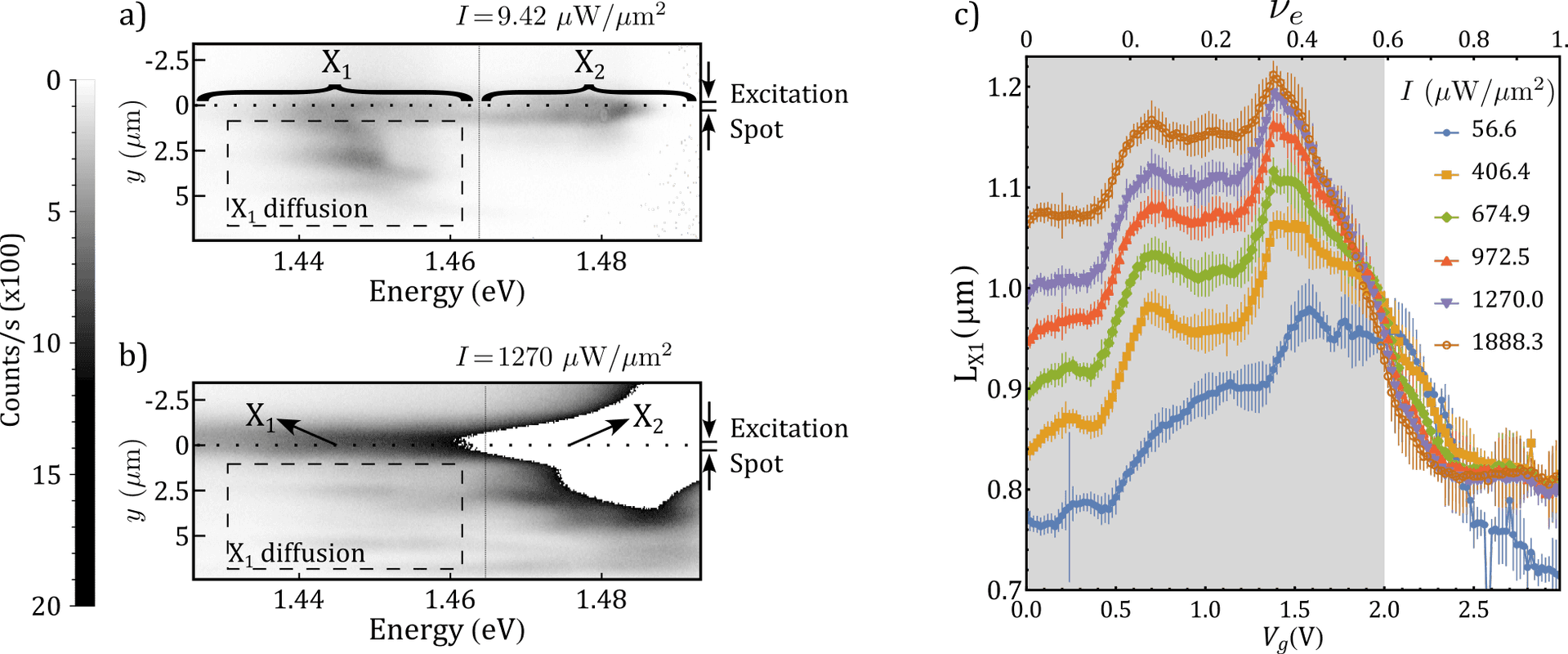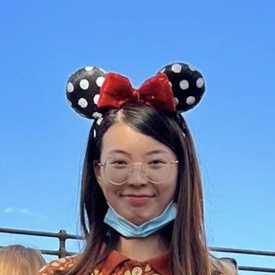Excitonic Mott insulator in a Bose-Fermi-Hubbard system of moiré WS2/WSe2 heterobilayer
August 18, 2023
Spectrally and spatially resolved diffusion pattern at νe=0.73 Vg=2.34 V for low (a) and high (b) I. The dashed rectangle highlights the region where the suppression of diffusion can be observed. (c) Exciton diffusion length as a function of the gate voltage for a range of νe and for different input intensities. For low νe (highlighted in grey) the diffusion length increases with I due to exciton repulsive interaction. Upon further filling the moiré lattice (dashed line), the trend changes around νe≃0.6, indicating the optical realization of incompressible states.Spectrally and spatially resolved diffusion pattern at νe=0.73 Vg=2.34 V for low (a) and high (b) I. The dashed rectangle highlights the region where the suppression of diffusion can be observed. (c) Exciton diffusion length as a function of the gate voltage for a range of νe and for different input intensities. For low νe (highlighted in grey) the diffusion length increases with I due to exciton repulsive interaction. Upon further filling the moiré lattice (dashed line), the trend changes around νe≃0.6, indicating the optical realization of incompressible states.
Understanding the Hubbard model is crucial for investigating various quantum many-body states and its fermionic and bosonic versions have been largely realized separately. Recently, transition metal dichalcogenides heterobilayers have emerged as a promising platform for simulating the rich physics of the Hubbard model. In this work, we explore the interplay between fermionic and bosonic populations, using a WS2/WSe2 heterobilayer device that hosts this hybrid particle density. We independently tune the fermionic and bosonic populations by electronic doping and optical injection of electron-hole pairs, respectively. This enables us to form strongly interacting excitons that are manifested in a large energy gap in the photoluminescence spectrum. The incompressibility of excitons is further corroborated by measuring exciton diffusion, which remains constant upon increasing pumping intensity, as opposed to the expected behavior of a weakly interacting gas of bosons, suggesting the formation of a bosonic Mott insulator. We explain our observations using a two-band model including phase space filling. Our system provides a controllable approach to the exploration of quantum many-body effects in the generalized Bose-Fermi-Hubbard model.
Read the full article here: https://arxiv.org/abs/2304.09731
Experts
People
![Profile photo of Beini Gao]()
Beini Gao
Graduate Student
![A smiling man with light brown skin sits in an office interior.]()
Daniel Suarez Forero
Assistant Prof. UMBC (starting 2025)
![Profile photo of Supratik Sarkar]()
Supratik Sarkar
Graduate Student


